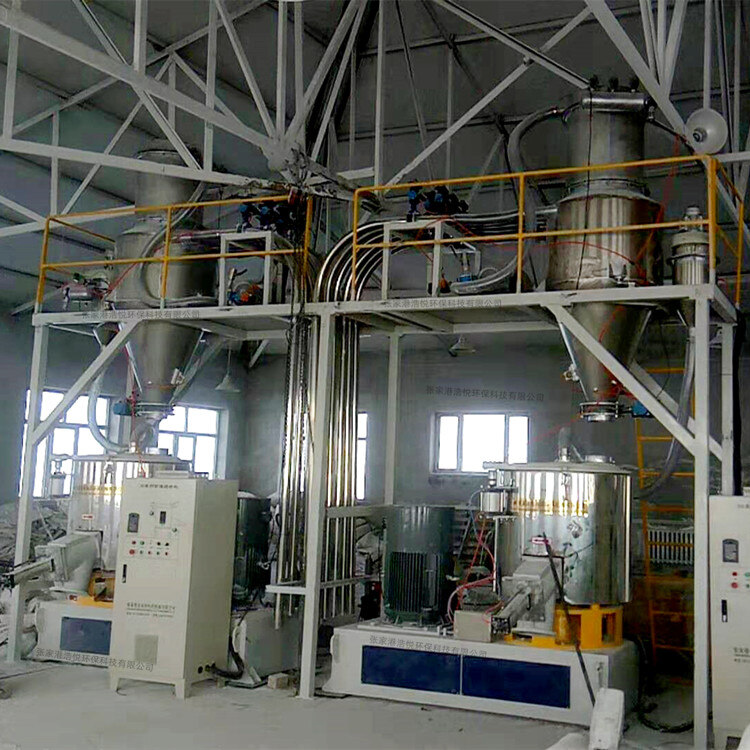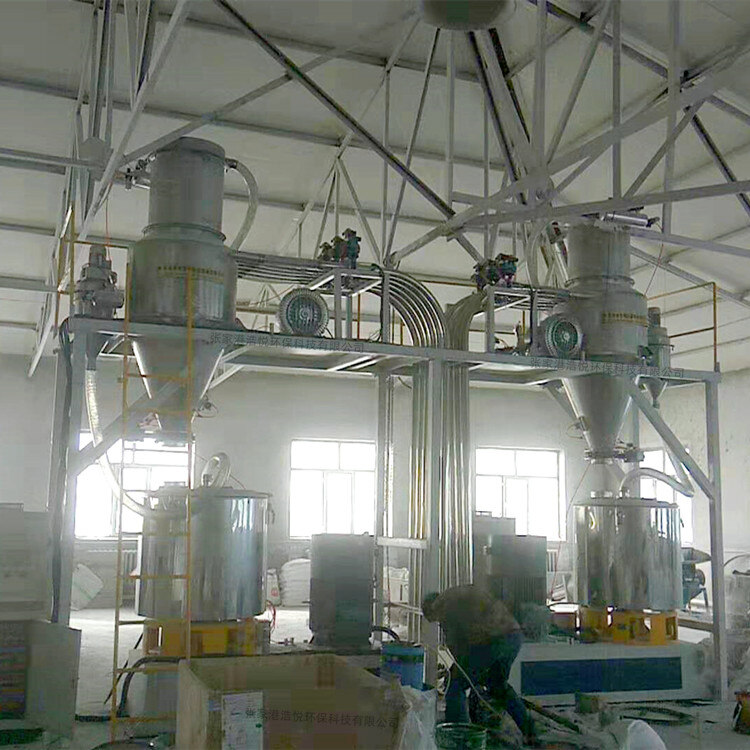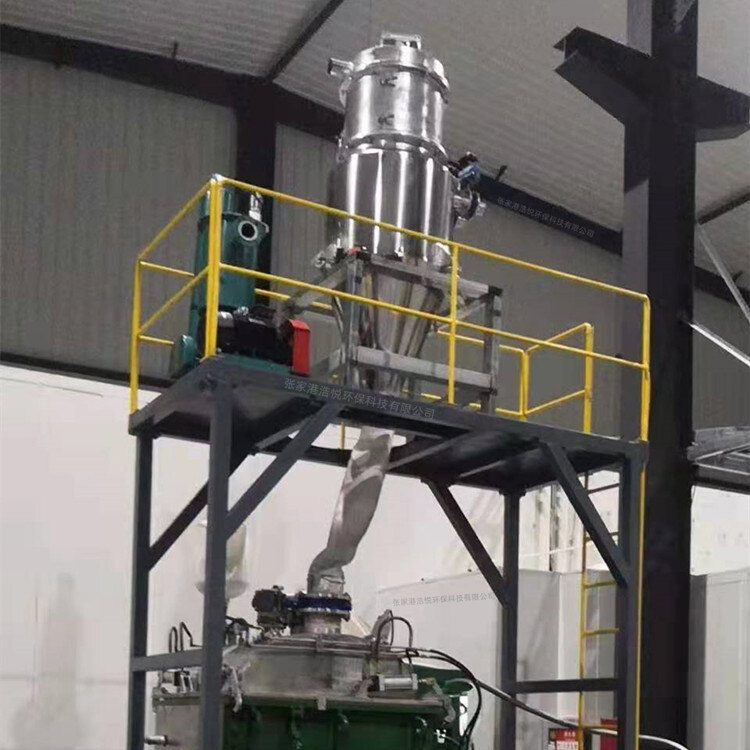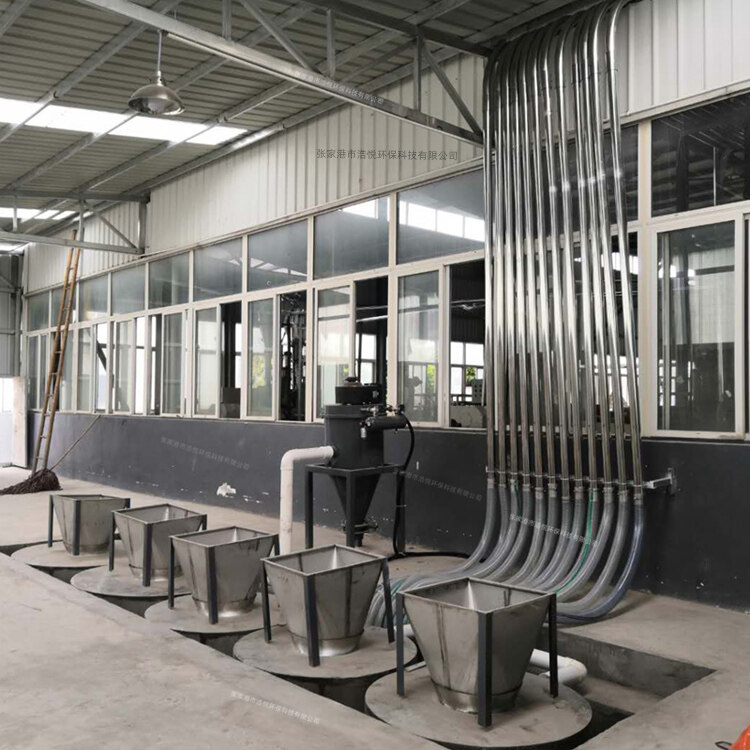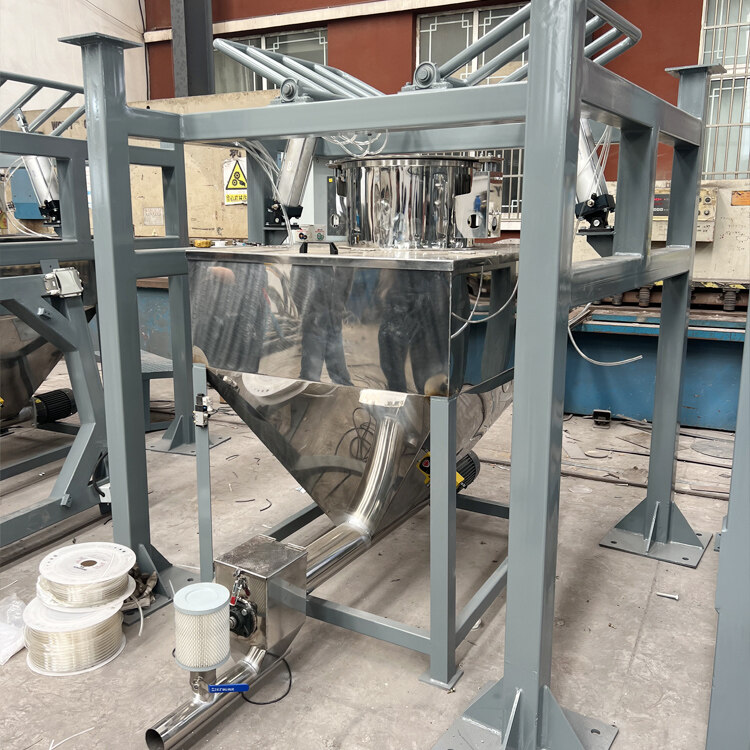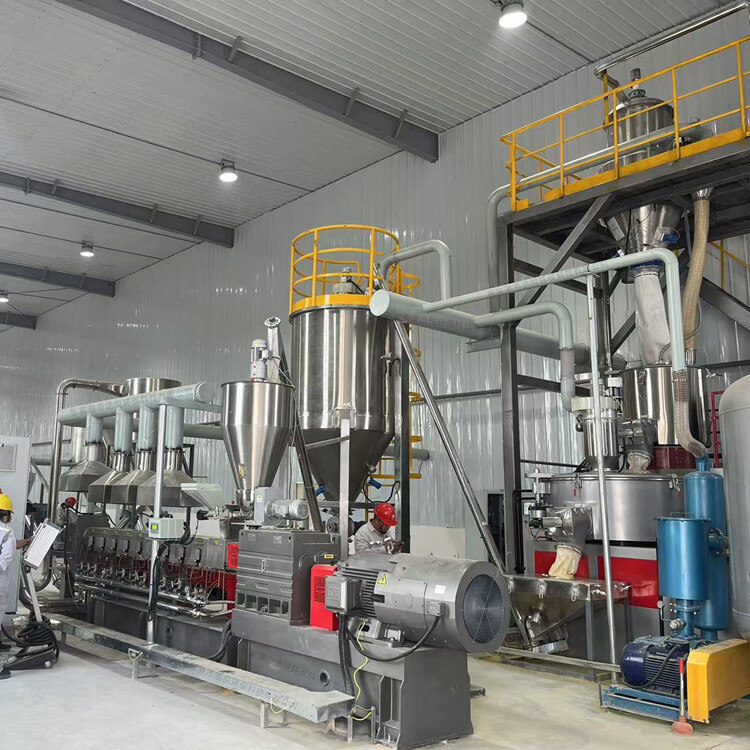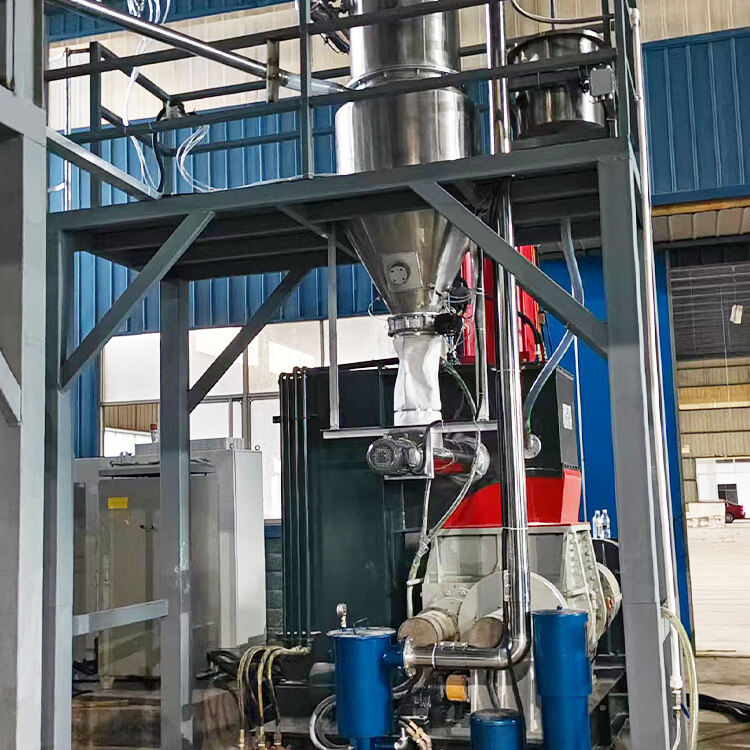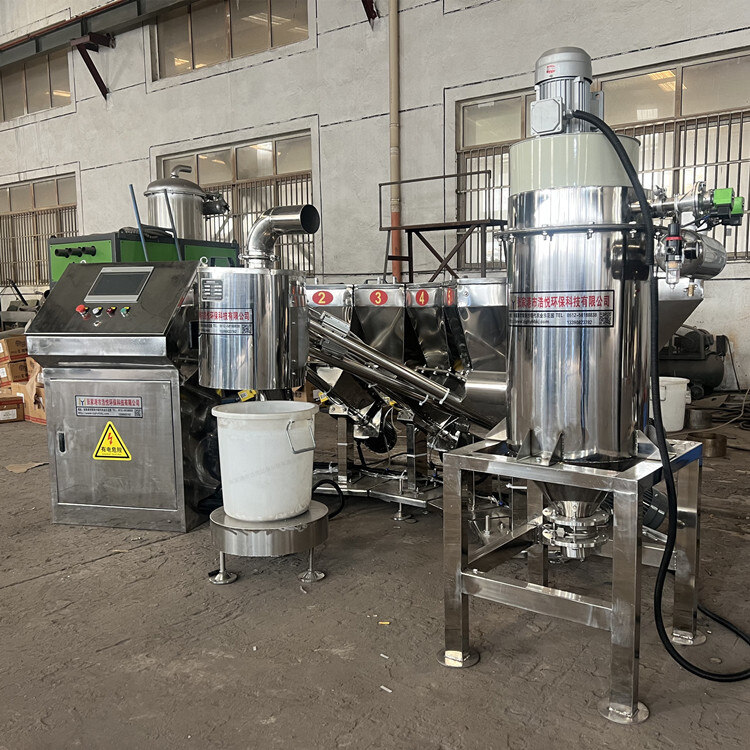- Introduction to automatic batching machine and fully automatic batching machine equipment
- The powder metering system tells you about the introduction of the mixing and drying machine
- 1000kg vacuum feeding machine
- Fully automatic small material batching system
- Research on Innovation of Automatic Weighing Machine Technology
- Design and operation of automatic batching system using PLC, industrial computer and frequency converter
Powder conveying and metering system
- Category:Automatic metering and conveying equipment
- Hits:125次
- Release Date:2025-06-23
- Share:
- Inquiry
- Details
1、 Core functions and technological advantages of the system
High precision measurement
The system adopts multiple measurement methods to meet different precision requirements. Weighing measurement uses high-precision sensors to monitor the weight of materials in real time, with an accuracy of ± 0.1% - ± 0.5%. It is suitable for materials with extremely high precision requirements such as pharmaceutical raw materials and food additives; Volumetric metering utilizes components such as screws and scrapers to transport in a fixed volume, with low cost and an accuracy of about ± 1% - ± 3%. It is commonly used for bulk powder materials such as cement and grain. Through dynamic compensation algorithms, the system can automatically correct errors caused by material density fluctuations and feed inertia.
Efficient dust-free conveying
In response to the dust prone characteristics of powders, the system adopts fully enclosed pipeline transportation, combined with technologies such as negative pressure pneumatic conveying, spiral conveying, and vibration conveying. Negative pressure pneumatic conveying uses Roots vacuum pumps to generate negative pressure ranging from -20kPa to -60kPa, and transports materials through pipelines to designated locations, with a conveying distance of over 100 meters and no dust leakage; Spiral conveyors are suitable for short distance (<15 meters) and low flow conveying. They prevent material overflow through U-shaped grooves and spiral blades, and the dust concentration in the workshop can be controlled below 10mg/m ³, which meets environmental standards.
Intelligent Control and Security Protection
Integrated PLC control system and touch screen operation interface, supporting remote monitoring and parameter adjustment. Operators can set parameters such as conveying volume, speed, and material level threshold with one click. The system has built-in functions such as material level monitoring, blockage alarm, overload protection, etc. When the material level in the silo is low, the pipeline is blocked, or the measurement deviation exceeds the limit, it will automatically shut down and issue an alarm; Some systems are equipped with explosion-proof motors, anti-static pipelines, and grounding devices, which are suitable for handling flammable and explosive powders (such as coal powder and aluminum powder) to ensure production safety.
Data traceability and management
The system records real-time information such as the conveying volume, measurement data, and operating parameters of each batch of materials, and supports integration with the factory MES system to achieve real-time uploading and historical traceability of production data. Through data analysis, enterprises can optimize production processes, monitor equipment operation status, and meet the traceability requirements of international certifications such as ISO and GMP for production processes.
2、 System composition and working principle
1. Core equipment unit
Storage unit
Storage bin: made of stainless steel or carbon steel material, with a capacity of usually 5-100 cubic meters, designed with a cone bottom (cone angle of 45 ° -60 °) and equipped with a vibrator, air cannon and other arch breaking devices to prevent material clumping and blockage; Install a pulse bag filter at the top, with a filtration efficiency of over 99%, to prevent dust from overflowing.
Material level monitoring device: Real time monitoring of the stock level in the silo is achieved through anti rotation, heavy hammer, and radar level gauges. When the material level is low, the replenishment process is automatically triggered to ensure production continuity.
unit of measurement
Weighing measuring equipment, such as weightlessness scales and belt scales, measures the weight of materials in real time through sensors, and combines PLC control of feeding speed to achieve dynamic and accurate measurement.
Volumetric measuring equipment: including spiral feeder, rotary valve, using fixed volume components to quantitatively transport materials, suitable for powders with good fluidity and stable density.
Micro metering device: For small dose materials such as chemical catalysts and food flavorings, a micro screw scale and weight loss micro metering system are used, with a minimum metering accuracy of up to gram level.
transport unit
Pneumatic conveying system: divided into negative pressure and positive pressure conveying, conveying materials to designated positions through pipelines, suitable for long-distance, multi-point conveying, and strong sealing.
Spiral conveyor: designed with or without shafts, suitable for short distance, small angle inclined conveying, especially for viscous or easily agglomerated powders.
Vibration conveyor: Driven by a vibration motor, the material slides along the tank and is commonly used for short distance feeding from the measuring bin to downstream equipment. The conveying speed can be adjusted.
control unit
PLC+touch screen: realizes equipment operation status monitoring, parameter setting, fault diagnosis and alarm, supports multilingual operation interface.
Data Interaction Interface: Supports communication protocols such as Modbus and Profibus, seamlessly integrates with factory ERP and DCS systems, and achieves centralized management of production data.
2. Workflow
Material storage: Powder materials enter the storage bin through the ton bag unloading station or manual feeding port, and the dust collector synchronously starts to adsorb dust.
Automatic measurement: The PLC system controls the measuring device to complete material weighing in the "coarse feeding+fine feeding" mode according to the preset formula or downstream equipment requirements.
Stable conveying: The measured materials are conveyed to downstream equipment such as mixers, packaging machines, or reaction vessels through closed pipelines using pneumatic conveying, spiral conveying, and other methods.
Intelligent monitoring: The system monitors parameters such as material level, conveying pressure, and measurement data throughout the entire process. In case of abnormalities, it automatically alarms and shuts down to ensure production safety and controllable quality.
3、 Typical application scenarios
Food industry: Accurately measure and transport raw materials such as flour, sugar powder, and milk powder to meet the hygiene and precision requirements of baking and dairy production.
Chemical industry: Used as an ingredient for chemical powders such as carbon black, pigments, catalysts, etc., to ensure product quality stability.
Building materials industry: achieve efficient transportation and measurement of bulk materials such as cement, fly ash, and mineral powder, and improve the efficiency of concrete and mortar production lines.
Pharmaceutical industry: For pharmaceutical intermediates, excipients and other materials, stainless steel equipment that meets GMP standards is used to ensure measurement accuracy and production safety.
4、 Technological development trends
Intelligent upgrade: Introducing AI algorithms to optimize measurement strategies, predicting material characteristic changes through machine learning, and achieving adaptive adjustment; Utilizing IoT technology to achieve remote diagnosis and predictive maintenance of devices.
Green and energy-saving: Develop low-energy conveying technologies (such as variable frequency control fans), adopt energy-saving motors and heating systems, and reduce operating costs; Optimize equipment structure to reduce raw material residue and waste.
Modular design: supports quick replacement of measuring units and conveying pipelines, adapts to different powder characteristics and production processes, and meets the flexible production needs of multiple varieties and small batches.
The powder conveying and metering system has become an indispensable key equipment in modern industrial production through technological innovation and functional integration. In the future, with the deepening application of intelligent manufacturing technology, this system will play a more important role in improving production efficiency, ensuring product quality, and promoting green manufacturing.


